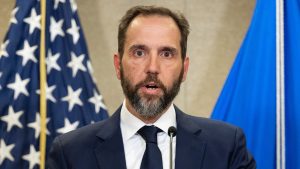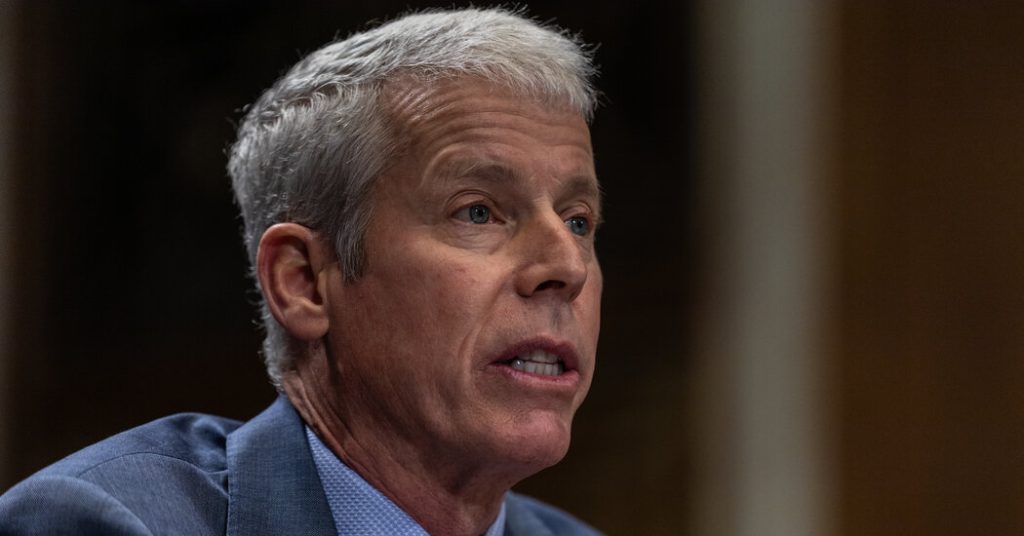Let me guide you through the complex yet intriguing story of Chris Wright, his path to the U.S. Department of Energy, and the implications of his ascent.
A New Energy Sheriff in Town
Chris Wright, a seasoned oil executive and founder of Liberty Energy—a company steeped in fracking technology—now stands as the 17th Secretary of Energy, confirmed by the Senate on a 59-38 vote. His appointment signals a pivotal moment in the trajectory of U.S. energy policy under the Trump administration. Wright’s career and priorities provide fascinating insight into the future of energy governance at a time when environmental concerns, technological advancements, and political agendas all collide.
Picture this: A man who built his career harnessing fossil fuels is stepping into one of the most important jobs in shaping America’s energy outlook. Wright’s story begins with a robust academic background, including time at the Massachusetts Institute of Technology and graduate work in solar energy at UC Berkeley. From there, he made his mark on the energy industry by founding Pinnacle Technologies, a company that engineered software crucial for the shale-gas boom. Afterward, he launched Liberty Energy in 2011, broadening his energy expertise into arenas like geothermal energy and modular nuclear reactors.
It’s no surprise, then, that Wright’s confirmation has evoked mixed feelings—from cautious hope among Republicans to outright alarm among Democrats and environmental advocates.
Balancing Act: Fossil Fuels vs. Renewables
Wright’s role sets him up to be the architect of an energy crossroads. On one hand, he proclaims that his mission is to “unleash” America’s domestic energy production. His ambitions explicitly include a focus on staples like liquefied natural gas and nuclear power, with a nod to renewables. During his Senate hearings, he acknowledged challenges like climate change, calling it a “global challenge we need to solve.” This moment of perceived bipartisanship appeared to throw a lifeline to Democrats hesitant about his fossil fuel-heavy background.
But make no mistake—Wright strongly supports President Trump’s so-called “bold” energy agenda, which leans heavily into expanding oil, gas, and coal production. Trump’s rhetoric on climate change borders on denialism, paired with disparaging comments toward renewables like wind and solar. In this context, Wright’s challenge will be walking the tightrope between his stated willingness to foster clean energy and his commitment to legacy fuels.
His past remarks don’t make this tightrope walk any easier. On social media and in podcasts, Wright has been quick to downplay the immediacy of climate change. For example, he described it as a “slow-moving, modest impact two or three generations from now,” effectively framing the issue as a distant concern. Statements like these irk environmental advocates and Democrats, who remain highly skeptical of his commitment to renewable energy research and climate action.
The Power of the Energy Department
Wright’s new job isn’t just about making speeches—it’s about overseeing the massive and sprawling U.S. Department of Energy (DOE). This is a dynamic organization with a $52 billion annual budget, of which a staggering 80 percent is dedicated to maintaining the nation’s nuclear weapons arsenal and cleaning up nuclear waste from the Cold War. The DOE also includes 17 national laboratories performing cutting-edge research in fields as diverse as physics, advanced battery technology, and green hydrogen.
Historically, the DOE has provided funding and loans for low-carbon energy projects—including cutting-edge nuclear reactors and infrastructure for renewable energy. Under President Biden, the department stepped up its clean energy ambitions and leveraged substantial funding from Congress for grants and loans aimed at battling climate change.
For Wright, this spells both opportunity and contention. Huge decisions are on the horizon, like whether to continue the DOE’s Loan Programs Office, which was empowered with a whopping $400 billion to catalyze innovative energy technologies. Conservative circles and industry skeptics have called for this office to be dialed back—or even scrapped. For comparison, under Biden, this division finalized billions in clean energy loans to companies experimenting with novel technologies, such as converting wind and solar electricity into hydrogen fuels. However, applications for future projects—over 160 companies seeking $200 billion—have largely been stalled since Trump took office. Under Wright’s leadership, the fate of these applications remains uncertain.
Divided Perspectives on Wright’s Appointment
As with politics, so with energy: Wright’s confirmation stirred both enthusiasm and apprehension. Conservatives and many Republicans hailed his appointment as necessary for reigniting a fossil fuel renaissance. Meanwhile, his critics—a coalition of environmental groups and liberal lawmakers—accused him of having dangerously outdated views on the climate crisis. The clash of ideologies was palpable.
One of Wright’s more controversial statements came in a 2023 social media post, where he declared flatly, “There is no climate crisis.” In essence, he staked his philosophical stance: fossil fuels are an undeniable moral good for humanity. Wright frequently argues that access to oil, gas, and coal in underdeveloped countries is the cornerstone of enabling millions to ascend out of poverty.
Yet, some Democrats and independents, intrigued by parts of Wright’s policy ideas, were willing to give him a cautious nod during the confirmation vote. This camp included moderates like Senators Michael Bennet and John Hickenlooper of Colorado, as well as Angus King, an independent from Maine. Senator Martin Heinrich of New Mexico summed it up: “While I do not agree with Mr. Wright on a number of issues, he has committed to working with us in good faith” on investments in vital infrastructure, such as national laboratories and clean energy technologies like long-distance power transmission.
A Tug of Allegiances
One cannot ignore Wright’s deep roots in the fossil fuel industry, nor the conflicts of interest that arise. He holds 2.6 million shares in Liberty Energy, a portfolio valued near $47 million. To manage this thorny intersection of private interests and public service, Wright committed in a written statement to resign his role at Liberty Energy and divest his holdings within 90 days of his confirmation. Nonetheless, the optics of the situation challenge perceptions of impartiality, especially given lingering questions about corporate profits shaping national energy priorities.
What Comes Next?
It’s clear that Wright’s role at the DOE will be defined by balancing unprecedented challenges. From securing America’s nuclear arsenal to funding revolutionary clean energy projects, his department holds transformative power. Wright must navigate the sharp divide between environmentalists demanding action on climate change and industries itching for regulatory rollbacks. His personal allegiance to fossil fuels might bolster traditional energy markets, but the stakes for renewable energy are equally high. How he leverages—or limits—the DOE’s resources will ultimately shape his legacy as Secretary of Energy.
In a way, Chris Wright’s story mirrors the broader U.S. energy narrative. It’s a tale of innovation colliding with tradition, environmental urgency clashing with economic interests, and an increasingly polarized political backdrop coloring policy decisions. As his tenure unfolds, one thing remains certain: the energy puzzle continues to evolve, and all eyes are on Wright to see how he chooses to piece it together.












